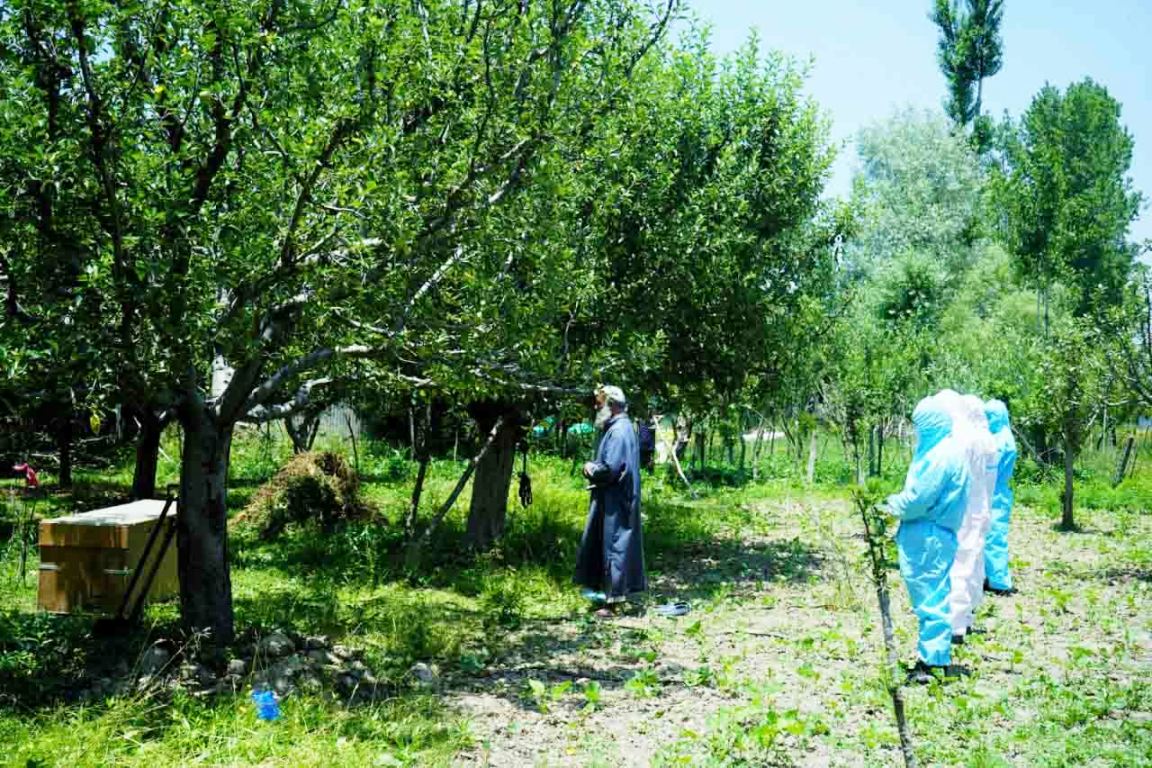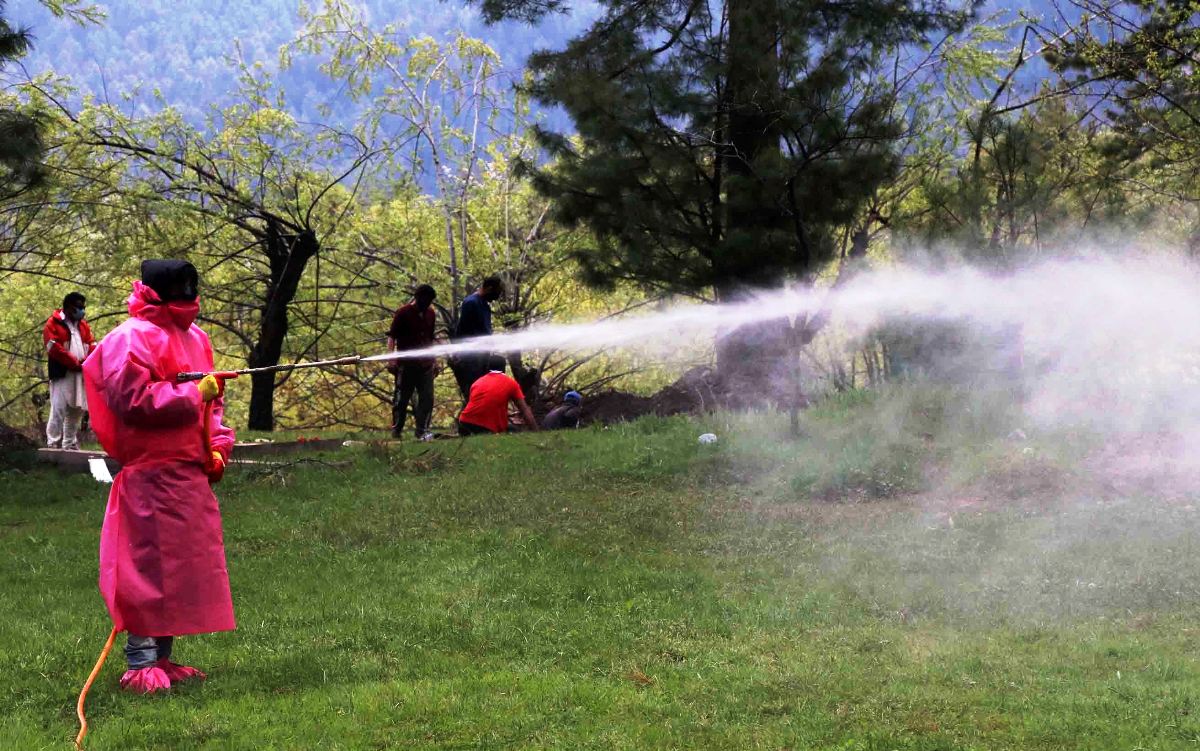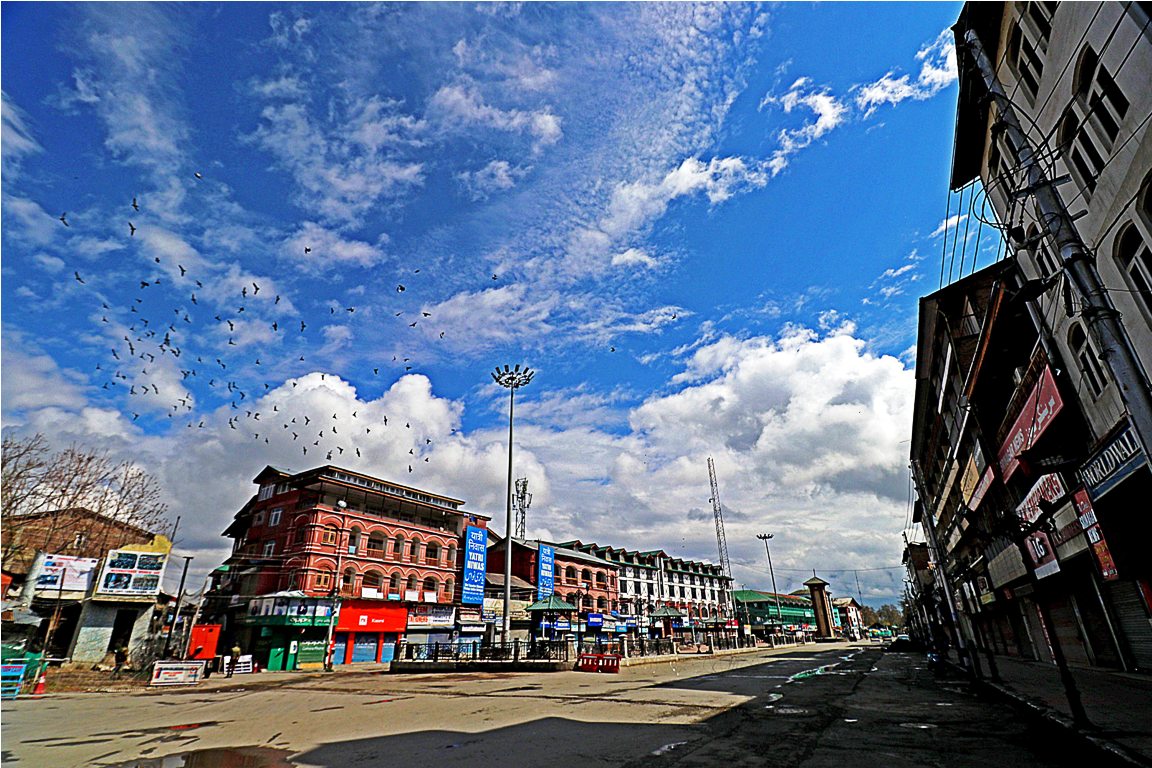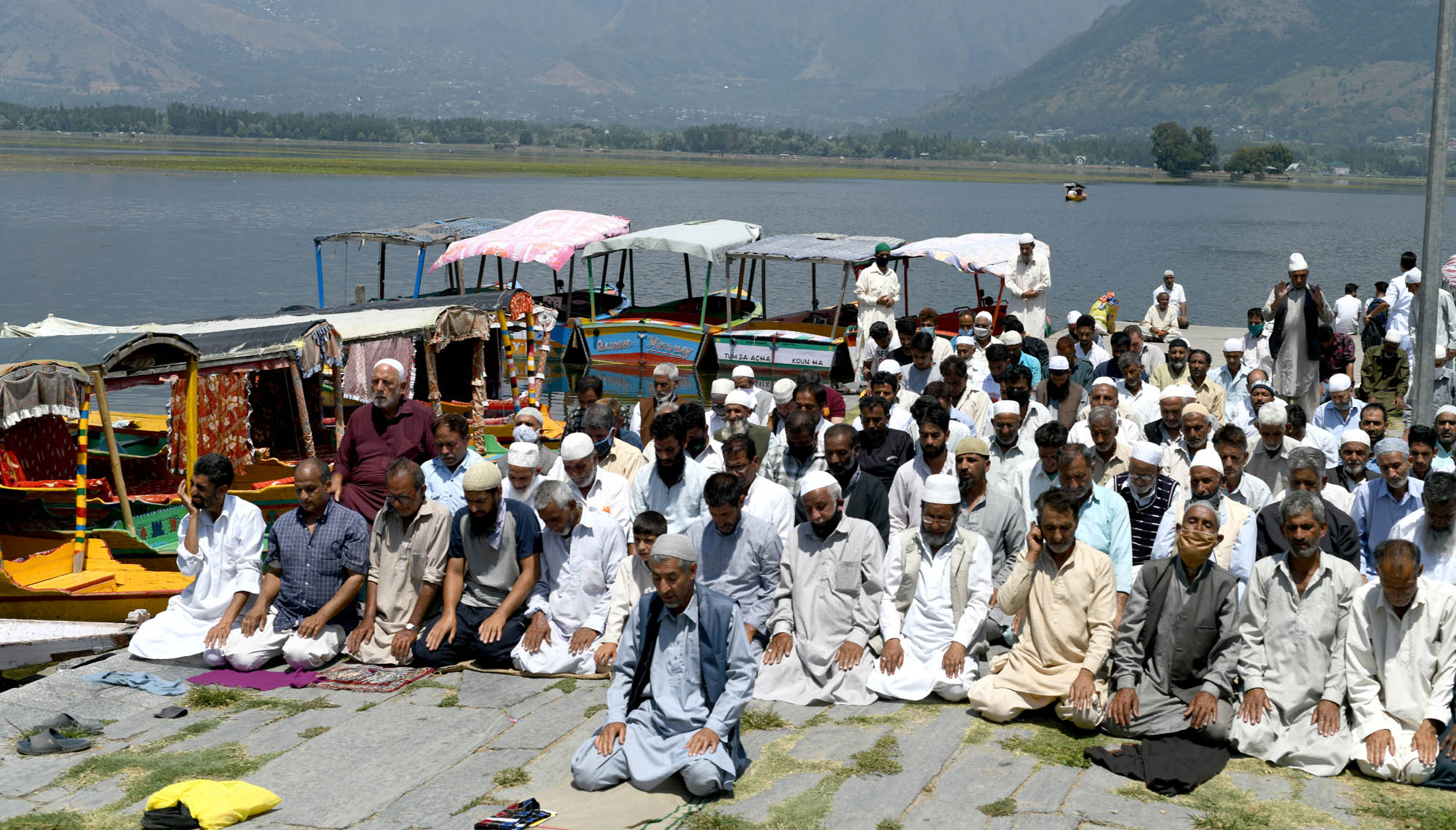In comparison to the first 100 days, Kashmir doubled up the Covid-19 body-bags in succeeding 25 days. Now more die young without co-morbidities. As the administration is gradually zooming out of the scene in an unlocked Kashmir, doctors talk of the dread they see in hospitals. They do not rule out community transmission. In absence of a cure, nobody knows how long the virus will continue killing people till Kashmir gets the elusive herd immunity, reports Tasavur Mushtaq

June 7, Abdul Hamid had a different routine almost after three months. Hopeful that the ease in the restrictions post-unlock-2 will help him bounce back to routine, this Hawal (Srinagar) resident had a long day at home. From morning to late evening, he washed his auto-rickshaw, managed to fill its tank, and checked the air pressure. Hamid was ready to hit the road.
Father of two daughters and the family’s lone bread earner, the family had only one concern, his “safety”.
“On one hand the threat is increasing and on the other side there is a state of helplessness,” said his daughter Ambreen. The family is caught in the safety and survival.
Not far away from Hamid lives Muhammad Faizan. A year ago, he lost his father to cancer. Now the only support of his mother and three sisters, he works in a private company. The family is unwilling to allow him to step out of home for work. “Who knows what will happen the moment he steps outside,” said his mother Atiqa.
The families of Hamid and Faizan are not isolated cases. With the increasing number of Coronavirus cases being detected and mortalities reported, safety concerns are surging. What would be the future course is something which haunts every home. The crisis is deeper in families which have to send one or more members of their families to work.
Since June 1, Kashmir is reporting a surge in infections and the deaths. The surge coincided with unlocking. After the executive committee headed by the chief secretary issued detailed guidelines for permissible activities, the Srinagar district administration decided to open markets on a rotational basis from June 13, 2020. Prior to that Jammu and Kashmir reported 620 positive cases – 583 from Kashmir, and 37 from Jammu – on June 7. Right now, the overall numbers have already crossed 10,000 and the deaths are heading towards 200.
Experts believe the pandemic in Kashmir has entered into the third and dangerous phase. “Government should reconsider its decision of giving relaxations,” said Dr Fahim.
Surging Suffering
On each passing day, the Covid-19 crisis is exhibiting a spike. The surge in the cases and increasing mortality has led to panic like situation, within and outside hospitals. The designated space for the affected persons, hospital sources said is shrinking and the demand for oxygen and ventilators is surging.

“I cannot say if it is the peak, but now we have more sick patients coming who need induced breathing,’ Dr Farooq Jan, the Medical Superintendent at the SKIMS, Soura said. “Right now we have 79 seriously sick patients and almost 60 of them are on oxygen.”
Doctors managing the disease said earlier the patients admitted were in better condition. “We had more patients admitted for Covid-19 earlier but almost eighty per cent of them were asymptomatic. Now we have more sick patients,” said Dr Jan.
The severity of the disease has increased in last month, said a doctor from GMC Srinagar. “You may have seen that the people who barely stay in the hospital for a day or two. So this speaks how grave the situation has turned,” he said.
In the GMC run Chest Disease (CD) Hospital – one of the first dedicated Covid-19 facilities in Kashmir, the condition is termed “bad” by insiders. They say the hospital is not in the condition to accommodate more patients and treat them well. “We have a flood of patients and ICU is full. All oxygen points are busy and more people require induced breathing,” said a doctor wishing anonymity.
A senior GMC faculty who wishes to stay anonymous said: “We are going from bad to worse.” Giving details, he said cases will increase manifolds in the coming days and the system would not be in a position to manage the load. “Earlier we used to receive asymptomatic or mildly symptomatic patients, but now there is a change. Every day our hospitals admit moderate or severely affected patients leading to fatalities.”
“We require more Covid hospitals now and not Covid care centres or camps,” the doctor said. “Oxygen and ventilators is what we could face a shortage of soon.”
Mounting Mortality
If the data provided by the government is analysed, things appear to have started changing since June 7, when 620 positive cases were reported. That day two persons from Kashmir died of Covid-19 taking the overall toll to 41.
In the subsequent days, there is a steady rise in deaths due to the deadliest virus. The fatalities reported in this period exceed the total deaths which took place in the first three months of the pandemic.

According to official figures, till June 17, four days after the restrictions were eased, 64 people had died with or of Covid-19 in the first nearly 100 days of the virus outbreak. In the subsequent 25 days, around 100 people lost their lives. Barring 14 deaths in Jammu, almost all the 164 deaths are in Kashmir with Srinagar topping the list.
In a single week, from June 30 to July 6, the virus killed 43 people in Jammu and Kashmir – 41 in Kashmir alone.
The worrisome part, experts say is the “age group” which has been hit off late. “Earlier we had elderly patients dying due to Covid and most with co-morbidities, but now many young people are falling victim to this virus,” a doctor in one of the Covid-19 facilities said.
“Once dead, the underlying causes mentioned are present in the majority of the population. So I believe blaming co-morbidities entirely is not right,” one doctor at the SKIMS said. “Don’t you think we have hypertension extensively present in the community?”
A doctor treating patients in a hospital outside Srinagar said, “age increases the risk of death only, but that does not mean young won’t die. It is all how far you are exposed to the infection and the viral load you carry.”
The panic has reached the political class, marginalised by the situation. “Covid is not some conspiracy to harass us,” Omar Abdullah tweeted recently. “It’s real & it’s serious. The government doesn’t help matters with its confused messaging & mixed signals vis a vis parks, hotels & yatra.”
As this report was filed, a consultant doctor in Srinagar lost his mother to the virus. “Everything possible was done to save her,” said his colleague and urged “please stop taking this lightly.”
Doctor’s Dilemma
Doctors know the viruses are more intelligent as a group. They have been voicing their concerns, throughout. “Only fools don’t change their mind,” Kashmir’s leading physician, Dr Parvaiz Koul, tweeted as early as March 30. “Review your policies if they have gone wrong. De-clutter hospitals. A SKIMS bed is not akin to a KU hostel room bed. Let hospitals be for the sickest.”

Those were the days when the administrators used to take the decision and the medical professionals were supposed to implement it. The contribution of the professionals in the overall decision-making was almost negligible. Police and civil administration was deciding things on a daily basis. The release of test results in the evening was an “event” and hospitals were advised against releasing it at their own level. Now the statistics is reduced to just a routine as dead move into news cycles on their own.
“The policy to quarantine everybody was flawed as nowhere in the world it was being followed,” Dr Shakeel, a senior doctor in the health department said. “The effort put in place for managing these patients could have been channelized to improve the infrastructure. But it seems only hype was created rather than the actual improvement on the ground.”
Seemingly on the back foot, the experts were driven by the orders from the administration. “Who listens to the experts nowadays??” said Dr Saleem Wani, Kashmir’s known Urologist. Dr Saleem was himself tested positive for the virus and has recovered.
Pulmonologist Dr Javed Malik said the requirement of oxygen is increasing. “We keep our fingers crossed. We have slightly more than the normal Covid-19 patient load and the requirement of Oxygen is increasing.”
Concerned about the increasing number of cases in Kashmir, interventional pain specialist Dr Tariq Tramboo on July 8 said, “at least 60 young boys symptomatic with pneumonia since last three days.” The pain manager believes “no one seems to care”.
“Attention: Covid 19 spreading, like wildfire,, overnight 20 young to Middle age pts admitted in SMHS with bilateral pneumonia and 10 in JNLM,,,Protect yourself if you can because no one seems to care!!”, he wrote on Twitter. “Either the virus has mutated or people are extremely careless. A lot of young people admitted with bilateral pneumonia. We will soon find no space in hospitals. Stay inside for a few weeks. The situation is really dangerous.”
Reacting to Dr Tramboo, another doctor Manzoor Ahmad said: “There’s no space in hospitals already. Lot of critical cases in level 2 hospitals like JLNM because level 4 hospitals are full.. Difficult times ahead.. Ya Allah reham.”

Voicing his concern, Dr Naveed Shah, head chest medicine GMC Srinagar said: “Where are we heading to. Deaths increasing, severe cases coming…can it be an indicator of the actual no of cases in the community.”
A paediatrician by specialization, Dr Inam Mir on July 8 in a Facebook post said: “ I did morning rounds at JVC, an apex COVID hospital. Things have become really dangerous now. Seeing Young patients of my age with the breathlessness of COVID pneumonia is frightening.”
Given the concerns of the experts, the situation seems scary, says Shuzana, but laments why the administration is silent. “If people who understand the crisis are scared, why is the administration in silent mode,” she asked.
Administrative Apathy
From day one of combating the virus, it was bureaucracy at the forefront. The experts in the field were either silent or subservient. For the first three months, the government did not “bother” to constitute an expert committee to deal with the situation, says a senior GMC doctor.
The bureaucratic management of the pandemic, Dr Bashir Khan, a surgeon specialist, said is the reason “why there is confusion.”
Three months later, on June 16, an apex level advisory committee was constituted to outline measures to be taken to control the pandemic. The 10-member committee headed by Dr Mohammad Sultan Khuroo, former director SKIMS, was also tasked to advise the government on these issues.
But the scenario on the ground remained unchanged. Commenting upon the situation, a senior doctor working in SMHS said the committee was formed just as a “face-saver”.
“Having a committee of hospital heads and few other doctors does not absolve you of the responsibility. It was just a face-saver government wanted to have and that too after three months,” he asserted. Explaining the crisis, the doctor said “Covid is not entirely a pulmonary disease. It needs a multi-systemic approach.”
Laughing out at the contribution of the committee, the doctor said “it was a shock to see their advisory of washing hands and using masks coming from the apex level advisory committee. Even TV anchors and radio jockeys do that part effectively. What we needed was something which could have been an expert contribution, but not.”
“This is ironic that people who don’t know the field call shots and suggest measures while experts have been isolated,” said Dr Fahim, a dentist.
“On Doctors Day, doctors shall remember that Pandemics are fought by non-medic generals and u just follow their directions based on their administrative skills and ur subservience,” Dr Salim on his Twitter.
Former cabinet ranked advisor and Professor Amitabh Matto urged the government to empower the doctors. “The #COVID situation in Kashmir is deeply alarming. Doctors are being marginalised, and experts have no agency to make decisions on vital issues of public health. Forget other differences, come together to save lives. LG GC Murmu take the lead; empower the Doctors NOW!”
New ‘Normal’
Given the situation, experts from health and administration suggest Covid has led the society to a new sphere. “We are now in a new ‘normal’,” says Dr S Muhammad Salim Khan, nodal officer for Covid-19 and head of GMC’s community medicine.
Taking about the period of earlier lockdown and its impact, Dr Salim said “Lockdown gave us the opportunity for the capacity building, preparedness, and increase in the testing capacity from 100s to 1000s.”

Technicalities apart, Dr Salim admitted that the lockdown helped to inculcate behavioural changes in the society – social distancing, use of the masks, the process of sanitisation and using other tools of hygiene.
Lockdown did flatten the curve. “If there would have been no restrictions, Kashmir would have witnessed early community spread,” Dr Iqbal Mir, a medico turned civil services officer, said. “The number you see today in hundreds would have surged to thousands.”
Providing Plasma
In the absence of specific treatment available for the deadly disease, the Convalescent Plasma Therapy (CPT) based on clinical judgement and status of patients as per director SKIMS Dr A G Ahangar has been adopted in Kashmir as well for “critically sick patients as one of the modalities of supportive treatment of this deadly infection.”
The method approved by the Indian Council for Medical Research (ICMR), is said to have “tremendous scope in the line of management for saving lives.”
In Kashmir, Dr Sajad Bhat, a third Year PG Resident from General Medicine, who recovered from the illness was the first one to donate the Plasma at SKIMS that the officials said was started in collaboration with Blood Transfusion and the Immuno-Hematology Department.
“Sher-i-Kashmir Institute of Medical Sciences (SKIMS), Soura (in Srinagar) conducted the first-ever Plasma therapy for Covid-19 patients -a medical procedure, doctors are using to treat novel Coronavirus diseases across the globe,” SKIMS said on July 9.
In the absence of treatment, plasma therapy is a way-out but not in every case. Its efficacy is still being debated but it is in vogue everywhere. Now there are demands to create a plasma bank.
Precautionary Provision
Right now when Kashmir is in the middle of the crisis, treating doctors and experts blame people and not the government. “People used masks like a movement pass during the lockdown and once it was over they thought mask is not needed,” Dr Salim said. “There is a lot of ignorance and arrogance.”
Dr Khan is strongly supportive of another lockdown, especially in Srinagar.

In this scenario, Dr Shakeel said, “every person should be suspected as Covid positive unless tested negative.” He further said there is a need to “take precautions and not leave everything to the government.”
As of now, he said the only way to prevent further spread is the precaution of wearing masks, maintaining physical distancing, washing hands, and restricting unnecessary movements.
“Invariably over a period of time, the majority of us may get exposed and may be immune to the virus.” said Dr Salim. “In the coming months we may achieve some degree of herd immunity but we are not sure at what level of infection we would be able to achieve that.”
The Unlock
Nobody is opposing the unlocking of life. But experts insist that people must exhibit the behaviour required for preventing the infection spread. Transporters, one journalist said, were desperate to be permitted to come back on roads. “They were supposed to charge double the fare but move with half of the seats,” one official who moves between Srinagar and Kupwara on a weekly basis. “The Sumo drivers drive with full capacity and charges double fares.”
Concerned people are desperate to understand why universal face masking cannot be imposed in Srinagar, in passengers transport, in banks and other places. Even the government has been behaving differently.
“If religious places continue to remain closed what was need to open the parks and gardens,” one doctor asked. “What is the net addition that the government did by flying to Srinagar from Jammu and saying durbar was opened.”















